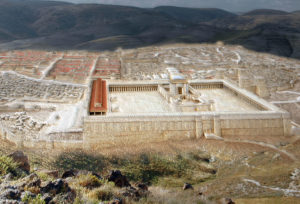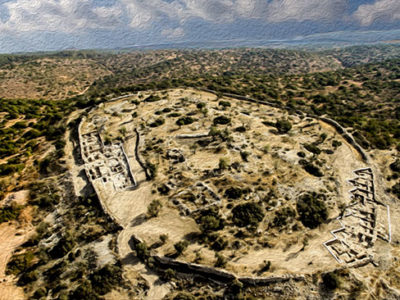FRANKLY, it’s all too rare that archaeologists find something that supports stories in the Bible.
In fact, my vote for the most entertaining atheist, comedian Bill Maher—a sharp-witted critic of religion and politics—has compared the Bible to the story of the Three Little Pigs.
I don’t think he was referring to the Trinity, but he’d likely be okay with that comparison. Instead, I think he was calling the Bible a fairy tale.
Certainly, many Bible stories are fiction.
Parables of Jesus, for example.
Plenty of scholars wonder out loud if the anonymously written stories of Jonah and Job are fictional stories, as well—intended to do the same thing that Jesus did in the parables: teach a spiritual truth.
Hardcore critics of the Bible have also targeted stories that most Bible experts would agree are intended as history—though not necessarily preserved with the accuracy we are capable of today.
Until about 10 years ago, many critics—and some Bible experts—said David was probably just a legend. A made-up hero, like King Arthur with his Knights of the Round Table.
That changed in 1993. That’s when King David’s name started turning up etched in stone—the first stone dated to about a century after David’s time. That little ditty includes the phrases “House of David,” ancient lingo for “dynasty of David,” along with “King of Israel.”
Since then, David’s name has turned up a couple more times.
The newest discovery, announced recently by a Jerusalem-based archaeologist, seems to link David to a city mentioned in his most famous adventure: his battle with Goliath. That Philistine’s champion warrior was one tall drink of water at six feet, nine inches (2 m). Some ancient copies of the story stretch him to nine feet, nine inches (3 m).
Archaeologist Yosef Garfinkel of the Hebrew University of Jerusalem reported that the fortified city recently excavated is most likely not only near where the battle between David and Goliath took place. It’s also probably a city actually mentioned in that battle.
Even more intriguing: the ruins seem to include a worship area—but not like most pagan worship centers found in the region. This one looks Jewish.
Clues it was Jewish:
- There were no figurines or drawings of people. These are common in ruins of non-Jewish worship centers. Moses to Jews: “Do not make statues of gods that look like anything in the sky or on the earth or in the waters” (Exodus 20:4 NIRV).
- No bones of pigs. Moses to Jews: “You may not eat the pig” (Deuteronomy 14:8 NLT).
- Earliest known example of Hebrew writing. The ancient Jewish writing was discovered here, written on broken pottery that dates to David’s time. The notes seem to have been rules about worshiping the Lord and taking good care of slaves, widows, and orphans. Until this writing was discovered, scholars had guessed that the Hebrew language didn’t start until 400 years after David.
The ruin, known by scholars as Khirbet Qeiyafa, is located about 19 miles (30 km) southwest of Jerusalem.
Dr. Garfinkel says he suspects the ruin was the fortress city of Shaaraim.
One clue: Shaaraim means “Two Gates.” This ruin had two entrance gates.
“When the Philistines saw that their champion [Goliath] was dead, they turned and ran…. bodies of the dead and wounded Philistines were strewn all along the road from Shaaraim, as far as Gath and Ekron” (1 Samuel 17:52 NLT).
Radiocarbon dating on olive pits found in the six-acre ruin date the ancient fortress to about 3,000 years ago—during the reign of King David.
People lived in the city between 1020 BC and 980 BC. King David reigned from about 1010 BC-970 BC—when Jews lived in the fortress city.
Since this kind of link to the Bible doesn’t happen often, I thought you might want to know about it when it does.
I’ll keep my eyes open for when it happens again. And it will.
We’ve got plenty of human beings poking holes in the Holy Land.


Very interesting.